Highlights
Highlights of Langtang Valley Trek
- Breathtaking Himalayan Views: Enjoy panoramic views of Langtang Lirung, Dorje Lakpa, and Ganesh Himal.
- Rich Cultural Experience: Explore Tamang and Tibetan cultures, reflected in their villages, monasteries, and lifestyle.
- Langtang National Park: Trek through a pristine conservation area, home to red pandas, snow leopards, and diverse flora and fauna.
- Accessible Adventure: A short drive from Kathmandu makes it one of the most accessible treks in Nepal.
- Scenic Trails: Hike through dense forests, glacial rivers, alpine meadows, and picturesque yak pastures.
- Kyanjin Gompa Exploration: Visit the iconic monastery and enjoy the serene mountain surroundings.
- Langtang Glacier and Peaks: Witness stunning glaciers and climb viewpoints like Tserko Ri for spectacular sunrise and sunset views.
- Support Local Communities: Contribute to the rebuilding of the Langtang region, which was heavily affected by the 2015 earthquake.
- Moderate Difficulty: Ideal for trekkers of all levels, including beginners looking for an introduction to Himalayan trekking.
- Customizable Itinerary: Offers flexibility in duration and difficulty to cater to individual preferences.
Overview
Langtang Valley Trek: Description
The Langtang Valley Trek is an extraordinary journey into Nepal's Himalayan wilderness, combining natural splendor, cultural exploration, and adventure. Located just 51 kilometers north of Kathmandu, Langtang Valley is often called the "Valley of Glaciers", featuring breathtaking views of snow-capped peaks, glistening glaciers, and verdant landscapes. This trek is perfect for those seeking an immersive Himalayan experience within a shorter timeframe and moderate difficulty.
Why You Should Trek to Langtang Valley
- Spectacular Mountain Views: Witness awe-inspiring vistas of Langtang Lirung (7,234m), Ganesh Himal, and Dorje Lakpa. The trek also offers mesmerizing sights of the Langtang Glacier and the surrounding peaks.
- Cultural Diversity: Experience the unique heritage of the Tamang people, influenced by Tibetan Buddhism. Their warm hospitality, traditional attire, and local delicacies add a rich cultural layer to the adventure.
- Eco-Tourism and Wildlife: Langtang National Park, home to red pandas, Himalayan tahr, and over 250 bird species, makes this trek a haven for nature enthusiasts.
- Accessibility: Unlike other treks requiring long flights or extended travel, Langtang is easily accessible with a 7–8-hour drive from Kathmandu to Syabrubesi.
- Less Crowded Trails: Compared to more famous routes like Everest Base Camp or Annapurna Circuit, Langtang Valley offers a quieter and more serene trekking experience.
Best Tips for Langtang Valley Trek
- Physical Preparation: While the trek is of moderate difficulty, it’s wise to prepare with light cardio and endurance exercises.
- Acclimatization: Ensure gradual elevation to prevent altitude sickness. Spend a day at Kyanjin Gompa to adapt.
- Pack Smart: Bring essentials like a down jacket, trekking poles, sunscreen, and comfortable hiking boots.
- Hire a Guide or Porter: Though the trail is well-marked, a guide ensures a safer and more enriching journey while a porter eases your load.
- Respect Local Culture: Learn about Tamang traditions, avoid polluting the trail, and practice responsible tourism.
- Cash on Hand: ATMs are unavailable in the Langtang region, so carry sufficient Nepali Rupees for food, accommodations, and tips.
- Travel Insurance: Cover emergencies like altitude sickness or evacuation.
Best Season for Langtang Valley Trek
The trek is doable year-round, but the best seasons are:
- Spring (March–May): The trails come alive with blooming rhododendrons, clear skies, and pleasant weather.
- Autumn (September–November): Offers stable weather, crisp air, and the best visibility of the Himalayan peaks.
- Winter (December–February): While colder, this season offers a peaceful trekking experience with snow-covered landscapes.
- Monsoon (June–August): Trails are lush and green, but frequent rain and leeches may pose challenges.
Key Attractions Along the Trail
- Syabrubesi: Starting point with local teahouses and scenic views.
- Lama Hotel: A tranquil resting point surrounded by forests.
- Langtang Village: Rebuilt after the 2015 earthquake, this village showcases Tamang culture.
- Kyanjin Gompa: The spiritual heart of Langtang, offering exploration of monasteries and local cheese factories.
- Tserko Ri (4,984m): A rewarding day hike for panoramic Himalayan views.
Short on time or seeking a unique experience? Soar over the spectacular Langtang Valley with our Langtang Valley Helicopter Tour , a scenic flight that takes you to the heart of the Himalayas in just a few hours.
🧭Alternative Tours & Packages
- Gosaikunda Trek
Venture on a spiritually enriching trek that winds through tranquil forests and alpine meadows, leading you to the sacred Gosaikunda Lakes — a serene escape for nature enthusiasts and pilgrims alike. - Gosaikunda Helicopter Tour
Experience a breathtaking helicopter ride over the pristine Gosaikunda Lakes, offering spiritual serenity and stunning Himalayan panoramas in a compact, awe-inspiring adventure.
Included and Excluded
- Accommodation in a tea house or lodge during the trek
- All the arrival and departure airport transfers.
- Two nights' BB hotel accommodation in Kathmandu at Hotel M Square or a similar hotel.
- Meals (Breakfast, Lunch, and Dinner) during the trek
- One experienced male English-speaking guide with his allowance
- There is one porter for every two trekkers.
- All the necessary trekking permits are required for the Everest Panorama trek.
- All forms of government taxes.
- During the trek, all personal expenses such as travel insurance, beverages, phone calls, internet, bar bills, laundry, water, travel insurance, and heater were incurred.
- Tips for the Guide Porter
- Helicopter rescue in case of an emergency.
- Personal trekking gear.
- All expenses incurred as a result of a change in itinerary due to political unrest, a strike, or a lockdown landslide.
- All the lunches and dinners in Kathmandu.
Itinerary
As you fly into Kathmandu, enjoy breathtaking views of the valley, the Himalayas, and the terraced fields below.
- Arrival: After clearing customs, our representative will assist you with your hotel check-in and help you navigate the bustling streets of Kathmandu.
- Explore or Relax: Once checked in, you can either explore one of Kathmandu's cultural attractions or take some time to rest.
- Dinner: In the evening, head out for dinner in Thamel, a vibrant tourist area filled with a variety of restaurants offering both Western and traditional Nepali cuisine.
Overnight: Stay at a hotel in Kathmandu.
In the early morning, as Kathmandu gradually awakens and the city isn’t yet bustling, it exudes a unique charm that you'll appreciate.
- Morning Exploration: Take a leisurely stroll through the neighborhood or enjoy a cup of tea while overlooking one of the durbar squares or quaint courtyards.
- Day Activities: With countless breathtaking sights nearby, there are many ways to spend your day in the Kathmandu Valley.
- Evening Dining: Later in the evening, dine at one of the city’s top restaurants, or your guide can arrange a meal at a local family's home for an authentic experience.
- Start Early: Depart from Kathmandu early for a scenic seven-hour drive to Langtang Valley.
- Stunning Views: As the road ascends from the Kathmandu Valley, enjoy breathtaking views of the Annapurna Himalayas to the west, as well as Manaslu, Ganesh Himal, and the peaks of the Langtang region ahead.
- Pass Through Trisuli: Travel through the bustling town of Trisuli before continuing your ascent to Dunche and entering Langtang National Park.
- Arrive at Syabru Besi: After descending from Dunche, reach Syabru Besi (Alt. 1,460 m / 4,790 ft), where you'll spend the night.
- Cross the Bhote Kosi: Start your day by crossing the Bhote Kosi, also referred to as the "Tibet River," which flows from the nearby region of Tibet.
- Scenic Ascent: Gradually ascend through tranquil oak and rhododendron forests, eventually connecting with the trail that leads from Syabru Besi.
- Wildlife Spotting: Keep your eyes peeled for langur monkeys among the trees, adding a touch of excitement to your trek.
- Reach Lama Hotel: After approximately 6 hours of trekking, arrive at the Lama Hotel (Altitude: 2,470 m / 8,103 ft). Here, you will be welcomed by a cozy lodge and a comfortable bed, perfect for relaxing after a day of adventure.
- Overnight Stay: Enjoy a delightful dinner and settle in for an overnight stay at the Lama Hotel, recharging for the next day's journey
- Glimpses of Langtang Lirung: Enjoy occasional views of Langtang Lirung as you ascend through the forest.
- Ghora Tabela: Reach Ghora Tabela (Altitude: 3,000 m / 9,842 ft), formerly a Tibetan resettlement site, now a Nepal Army post.
- Widening Valley: The trail continues to widen, passing temporary herder settlements. Keep an eye out for yaks grazing in the summer pastures.
- Langtang Village Remains: The next section serves as a reminder of the 2015 earthquake, with only a rock field remaining where Langtang village once stood. Your visit supports local survivors.
- Arrival at Mundu: After a 30-minute walk, arrive at Mundu (Altitude: 3,550 m / 11,646 ft), where old homes showcase traditional village architecture.
- Modern Accommodations: Most guesthouses now reflect a modern style.
- Overnight Stay: Overnight at a lodge or guesthouse in Mundu after approximately 6 hours of trekking.
- The trail ascends gradually from Mundu as the valley widens and the views expand while passing through yak pastures.
- Today’s trail ends at Kyangjin (Alt. 3,800m/12,467 ft) after crossing several minor streams and moraines. There is a small monastery nearby, as well as a cheese factory run by the government that is a great place to get supplies for lunch and afternoon snacks.
- Since you'll be there by lunch, you have the afternoon free to relax or go exploring. If you have the energy, you can ascend the valley toward Langshisha Kharka to see some of the breathtaking views.
- Rest Day at Kyangjin: Today is a rest day at Kyangjin, the highest point of this trek. Take the opportunity to enjoy stunning views of the Tsergo Ri and Kyanjin Riading, which rises above 4,700 m.
- Spectacular Scenery: From this vantage point, you can see magnificent peaks, including:
- Langtang Himal: The range that includes Langtang Lirung (7,234 m) and Ganesh Himal (7,405 m).
- Other Notable Peaks: Bengaluru (Langtang II), Kimshun (6,745 m), Shalbachum (6,918 m), Chimsedang, Naya-Kanga (Ganja Chuli) at 5,846 m, Gangchempo, and Tilman's Fluted Peak, stretching east toward 6,980 m.
- Tibetan Views: The scenery also encompasses several peaks on the Tibetan side of the border, formed by the Langtang Himal, which separates Nepal from Tibet/China.
- Overnight Stay: Enjoy a comfortable overnight stay at a teahouse or lodge in Kyangjin
- Descent from Kyangjin: Retrace your steps from Kyangjin to Ghora Tabela, following the Langtang Khola from Mundu village.
- Faster Descent: The descent will be quicker than the ascent, allowing you to enjoy the scenery along the way.
- Lunch Stop: After lunch, continue your trek down the slope toward the Lama Hotel.
- Overnight Stay: Spend the night at the Lama Hotel, resting after a fulfilling day of trekking.
- Descent to Syabru Besi: Retrace your steps to Syabru Besi, enjoying the serene, tree-covered hills along the way.
- Optional Detour: If you're feeling adventurous, consider taking a breathtaking detour from Rimche to Syabru Besi via Sherpa Gaon. This route is longer but offers stunning views.
- Dinner and Overnight Stay: Enjoy dinner and spend the night at a lodge or guesthouse in Syabru Besi, reflecting on your trekking experience.
- Journey to Kathmandu: Take an overland journey from Syabrubesi village in Rasuwa district to Kathmandu, traveling by private car, coach, or tourist bus, depending on your group size.
- Scenic Morning Ride: Enjoy an early morning ride along the same scenic road, with breathtaking views throughout the drive back to Kathmandu.
- Afternoon Free Time: Once you arrive, you’ll have the afternoon free for personal activities, including souvenir shopping.
- Overnight Stay: Spend the night at a hotel in Kathmandu, reflecting on your trekking adventure.
- Farewell to Nepal: After an incredible experience in Nepal and an unforgettable adventure on the "Langtang Valley Trek," it’s time to say goodbye to this beautiful country.
- Last Breakfast and Exploration: Enjoy your final breakfast at a café, take a leisurely stroll through the city, or do some last-minute souvenir shopping to wrap up your time in Kathmandu.
- Airport Transfer: A representative will meet you at your hotel to escort you to the airport, ensuring you arrive in time for your flight home.
- Airport Arrival Recommendation: It is recommended to arrive at the airport at least two hours before your departure.
Route Map
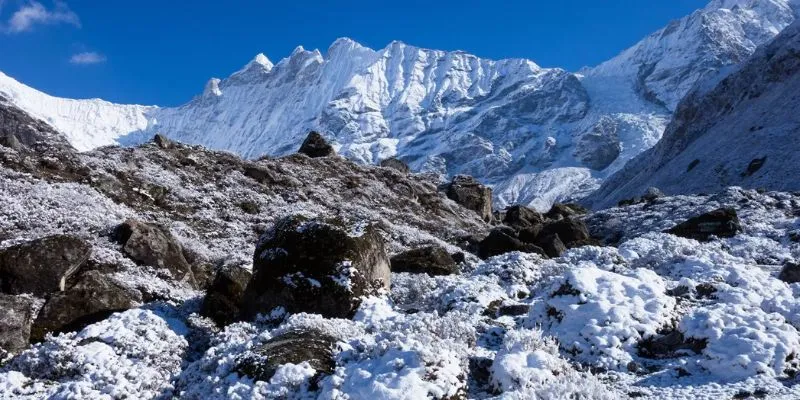
Fixed Departure
Langtang Valley Trek Availability
| # | Date | Cost | Status | Action |
|---|
FAQs
The best times to trek in Langtang Valley are from March to May (spring) and from mid-September to early December (autumn to pre-winter). During these periods, the weather is generally clear, offering stunning views of snow-capped peaks and blooming rhododendrons in the spring. Avoid trekking during the monsoon season (mid-June to mid-September) due to heavy rains and potential landslides.
Trekking in Langtang Valley helps generate much-needed income for the local community, especially as they rebuild their lives after the 2015 earthquake. By choosing to trek in this region, you contribute to the sustainable development of the area, helping residents rebuild their homes, farms, and livelihoods while preserving their culture and dignity.
The Langtang Valley Trek offers a rich cultural experience, particularly with the Tamang people, who are the predominant ethnic group in the region. The Tamang practice a blend of Buddhism and the pre-Buddhist Bon religion, with worship centered on the five natural elements. Along the trek, you'll encounter Buddhist monasteries like Kyangjin Gompa, prayer flags, and traditional Tamang villages. Additionally, Hindu communities, including Brahmins, Chettries, and Dalits, reside in the lower hills.
The Langtang Valley Trek is considered a moderate trek, suitable for trekkers with some prior experience. The trek begins in Syabru Besi and gradually ascends through forests and alpine meadows. The highest point reached during the trek is Kyangjin Gompa, located at an altitude of 3,800 meters (12,467 feet) above sea level. The trek involves steady climbs but is manageable with proper acclimatization and preparation.
The best times to trek in Langtang Valley are from March to May (spring) and from mid-September to early December (autumn to pre-winter). During these periods, the weather is generally clear, offering stunning views of snow-capped peaks and blooming rhododendrons in the spring. Avoid trekking during the monsoon season (mid-June to mid-September) due to heavy rains and potential landslides.
Trekking in Langtang Valley helps generate much-needed income for the local community, especially as they rebuild their lives after the 2015 earthquake. By choosing to trek in this region, you contribute to the sustainable development of the area, helping residents rebuild their homes, farms, and livelihoods while preserving their culture and dignity.
The Langtang Valley Trek offers a rich cultural experience, particularly with the Tamang people, who are the predominant ethnic group in the region. The Tamang practice a blend of Buddhism and the pre-Buddhist Bon religion, with worship centered on the five natural elements. Along the trek, you'll encounter Buddhist monasteries like Kyangjin Gompa, prayer flags, and traditional Tamang villages. Additionally, Hindu communities, including Brahmins, Chettries, and Dalits, reside in the lower hills.
The Langtang Valley Trek is considered a moderate trek, suitable for trekkers with some prior experience. The trek begins in Syabru Besi and gradually ascends through forests and alpine meadows. The highest point reached during the trek is Kyangjin Gompa, located at an altitude of 3,800 meters (12,467 feet) above sea level. The trek involves steady climbs but is manageable with proper acclimatization and preparation.
Customer Reviews & Rating
Showing Verified Reviews

Ben Jackson - Wellington, New Zealand
(5.0)"Langtang was epic! From the majestic peaks to the friendly mountain villages, every day was filled with incredible scenery and warm hospitality. The team at Explore Nepal Trekking handled everything with great care, and our guide made the journey both fun and meaningful. Highly recommended for anyone looking for a rewarding Himalayan trek without massive crowds."

Chloe A. Miller - 78 High Street, London, SW1H 9AS, UK
(5.0)"The Langtang Valley Trek was an absolutely gorgeous and rewarding journey; the valley itself is stunning, offering dramatic, close-up views of Langtang Lirung and passing through traditional Tamang villages. The trail is much less crowded than Everest or Annapurna, providing a peaceful experience. Our guide was excellent and the local hospitality in the rebuilt teahouses was incredibly warm. Highly recommend this trek for its accessibility and spectacular scenery."

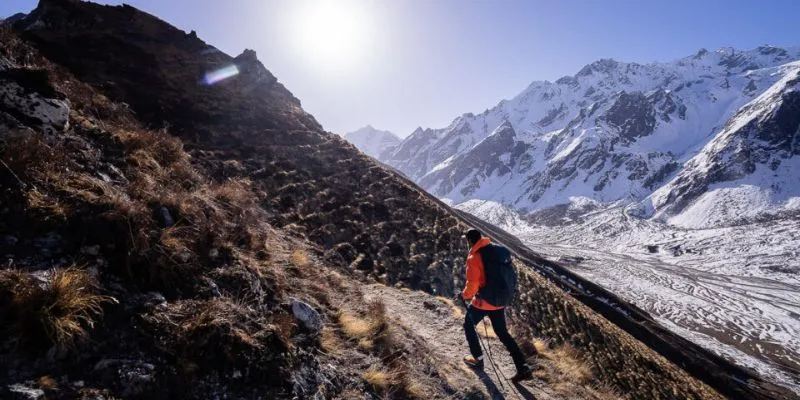
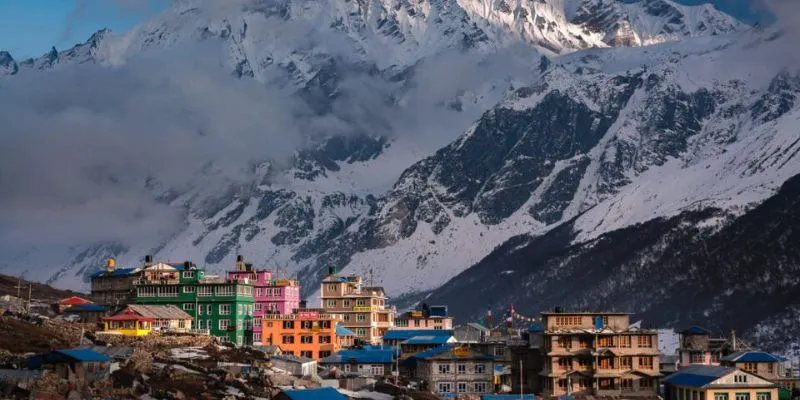
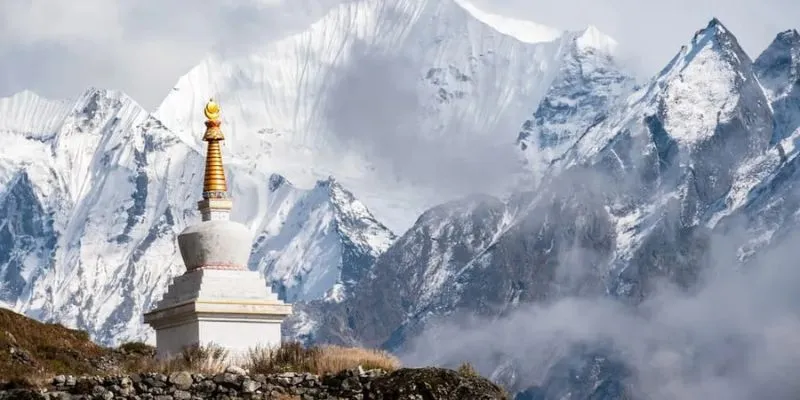
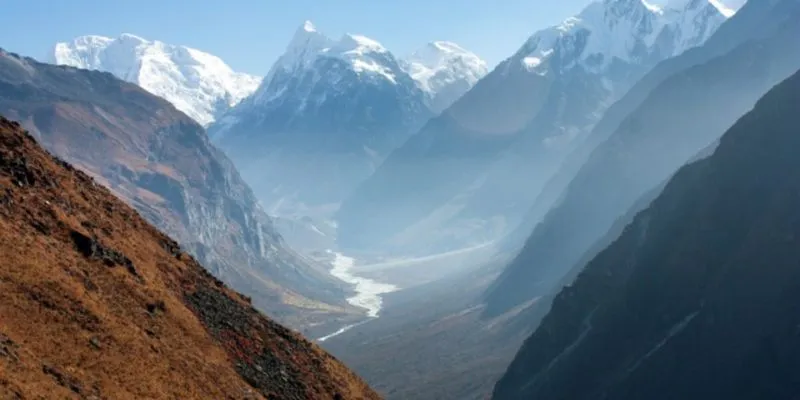
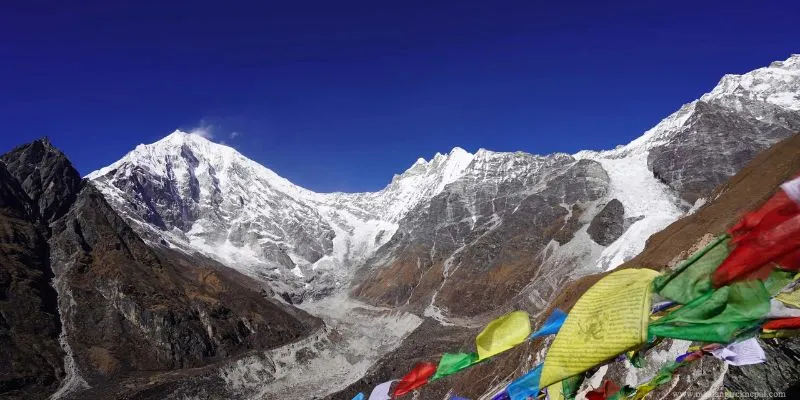
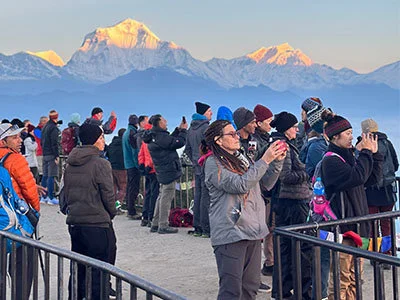
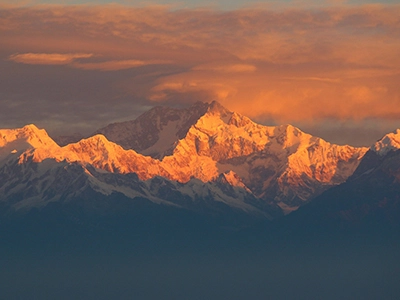

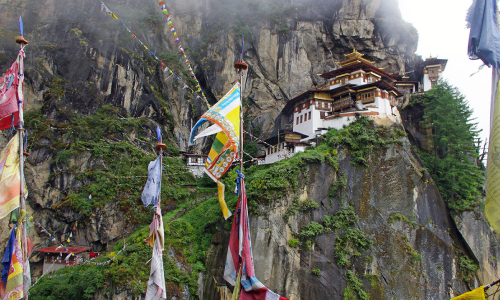
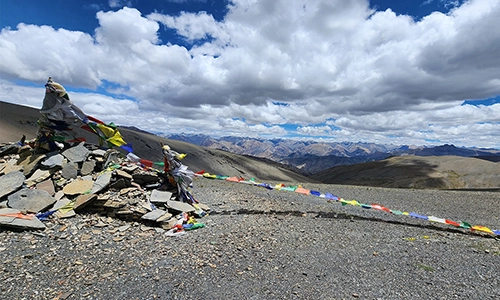
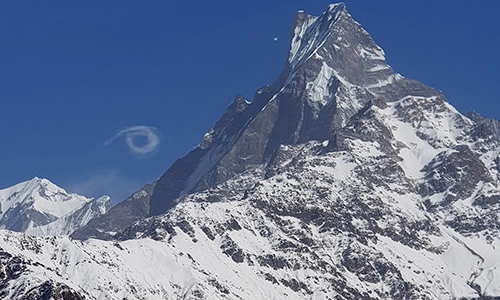








Olivia Martinez - Madrid, Spain
(5.0)"The Langtang Valley Trek with Explore Nepal Trekking was one of the most beautiful journeys I’ve ever taken. The mix of lush forests, alpine meadows, and towering peaks was breathtaking. Our guide was incredibly kind and shared stories about the local Tamang culture, which added a deep richness to the experience. The trek wasn't overly crowded, and it gave us a peaceful connection with nature. The team made sure we were comfortable, safe, and well-fed. Truly an underrated gem in Nepal.”"